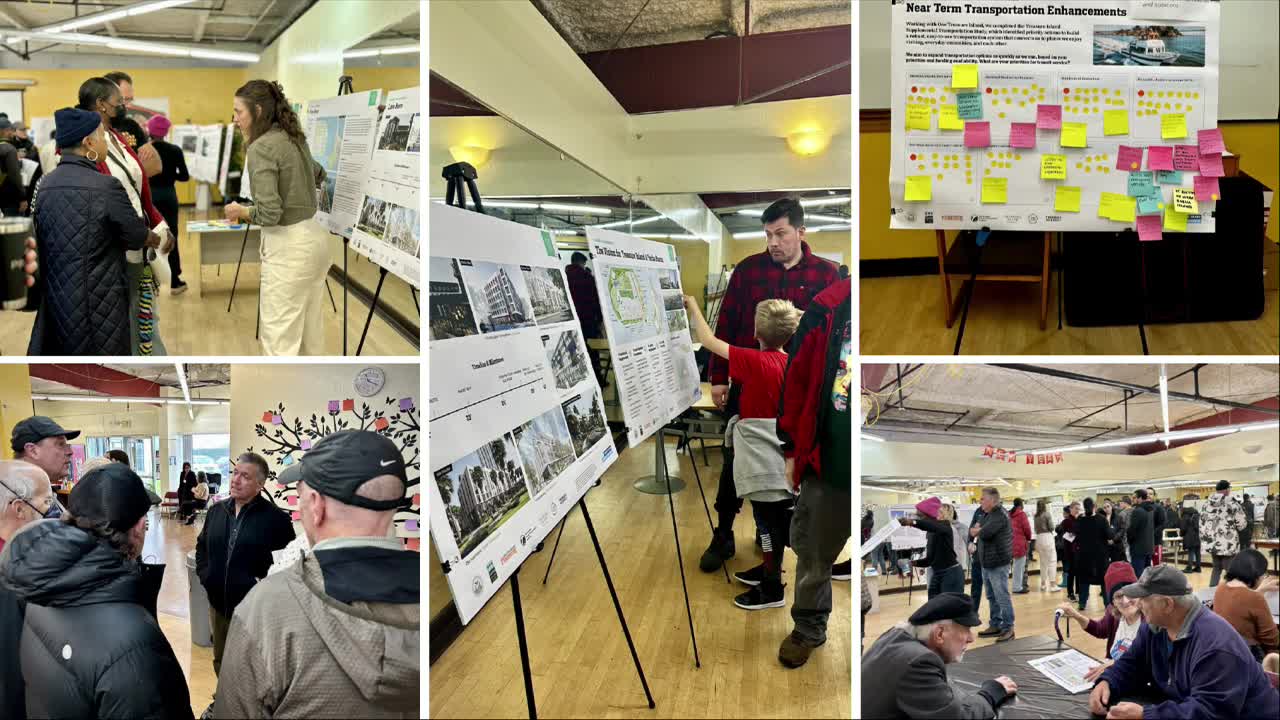San Francisco's Treasure Island project gains support for critical zoning and development amendments
April 04, 2024 | San Francisco City, San Francisco County, California

This article was created by AI summarizing key points discussed. AI makes mistakes, so for full details and context, please refer to the video of the full meeting. Please report any errors so we can fix them. Report an error »

San Francisco's ongoing development of Treasure Island took a significant step forward during a recent city meeting, where officials discussed crucial amendments aimed at advancing the project. The proposed changes, which include planning code and zoning map amendments, are designed to facilitate the construction of new housing and infrastructure on the island, a site with a complex history dating back to its creation as a landfill in the 1930s.
Supervisor Matt Dorsey's office hosted a community open house in January, allowing residents to engage with city agencies and the master developer, Treasure Island Community Development. This event was part of the Treasure Island Development Authority's (TIDA) Equity Program, which aims to foster an inclusive community. Attendees reviewed proposed amendments and learned about ongoing development and transportation planning.
The meeting highlighted three key actions recommended for approval by the planning commission: amendments to the planning code, a development agreement, and design approvals. These amendments are critical for the next phase of development, which is expected to include 1,300 new housing units, with a portion designated as affordable housing.
Support for the amendments came from various stakeholders, including labor representatives and community organizations. Mauricio Chavez, an organizer with the NorCal Carpenters Union, emphasized the project's role in providing much-needed housing and creating jobs during challenging economic times. He noted that the first phase has already generated nearly 1,000 housing units, with a significant number set aside for low-income residents.
However, concerns were raised about the project's risks, particularly regarding environmental issues and the potential for flooding due to climate change. Critics pointed out that the development is behind schedule and has faced significant cost overruns, raising questions about its viability.
Despite these challenges, the planning commission expressed support for the amendments, recognizing the project's potential to address San Francisco's housing crisis. The next steps involve further discussions and approvals from the Board of Supervisors, with hopes that the project will continue to progress and ultimately provide a vibrant, sustainable community on Treasure Island.
Supervisor Matt Dorsey's office hosted a community open house in January, allowing residents to engage with city agencies and the master developer, Treasure Island Community Development. This event was part of the Treasure Island Development Authority's (TIDA) Equity Program, which aims to foster an inclusive community. Attendees reviewed proposed amendments and learned about ongoing development and transportation planning.
The meeting highlighted three key actions recommended for approval by the planning commission: amendments to the planning code, a development agreement, and design approvals. These amendments are critical for the next phase of development, which is expected to include 1,300 new housing units, with a portion designated as affordable housing.
Support for the amendments came from various stakeholders, including labor representatives and community organizations. Mauricio Chavez, an organizer with the NorCal Carpenters Union, emphasized the project's role in providing much-needed housing and creating jobs during challenging economic times. He noted that the first phase has already generated nearly 1,000 housing units, with a significant number set aside for low-income residents.
However, concerns were raised about the project's risks, particularly regarding environmental issues and the potential for flooding due to climate change. Critics pointed out that the development is behind schedule and has faced significant cost overruns, raising questions about its viability.
Despite these challenges, the planning commission expressed support for the amendments, recognizing the project's potential to address San Francisco's housing crisis. The next steps involve further discussions and approvals from the Board of Supervisors, with hopes that the project will continue to progress and ultimately provide a vibrant, sustainable community on Treasure Island.
View full meeting
This article is based on a recent meeting—watch the full video and explore the complete transcript for deeper insights into the discussion.
View full meeting
